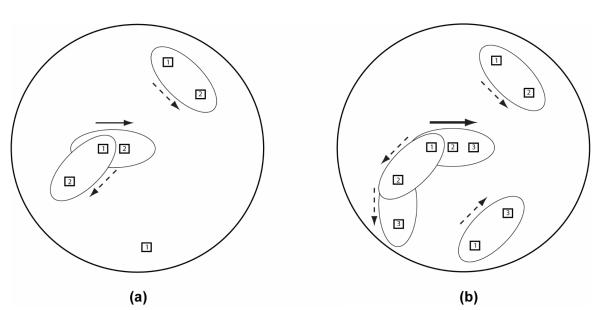Figure 2.
Two illustrations to clarify the local motion directional ambiguity that is elicited by an RDM stimulus. In both panels, the coherence level is 33%, the signal direction (solid arrow) is rightward, and the refresh rate is 60 Hz (16.67 ms−1). Note that incoherent local motion signals (dashed arrows) are also activated. In the direction estimation task, the analog signal direction needs to be extracted in the presence of directional clutter. The oval-shaped receptive fields represent directional short-range filters, which have relatively short spatial and temporal limits within which directional evidence can be accumulated. In (b), note that the same dot was chosen to move in the signal direction for two frames, which is expected to produce a stronger local motion signal (thicker arrow) in the activated short-range filter population coding the signal direction.

